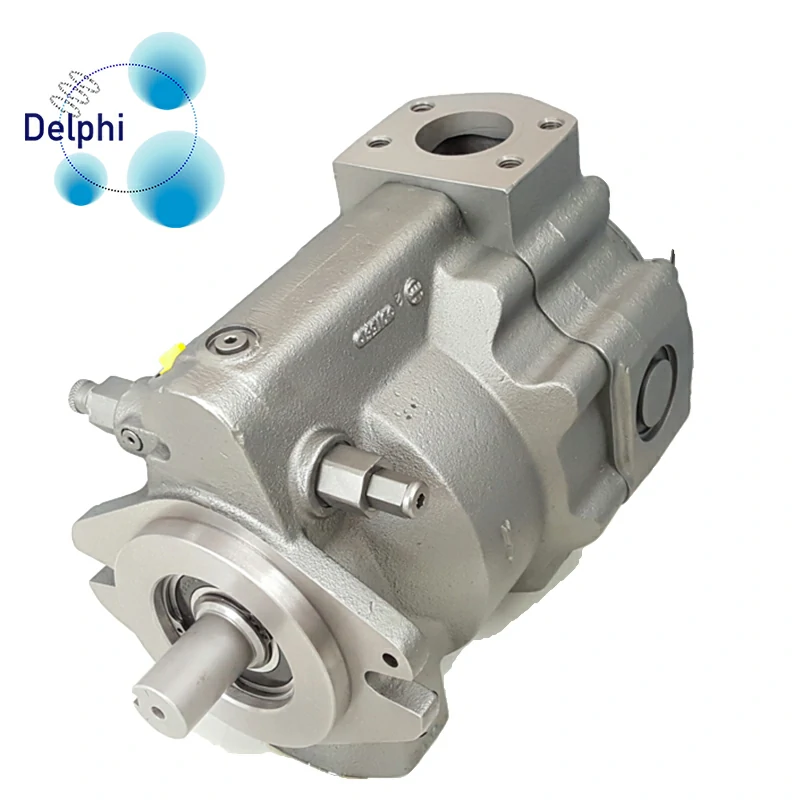هائيڊولڪ پمپس ۽ سلنڈر هائڊولڪ سسٽم ۾ گڏيل حصا آهن جيڪي ميڪانياتي طاقت ۽ مشيني افعال جي منتقلي جي منتقلي کي فعال ڪن ٿا. Hydraulic systems offer numerous advantages over traditional mechanical drivetrains including higher power density, higher efficiency, and fast power transients. Therefore, هائيڊولڪ پمپ ۽ سلنڈر are commonly as used in heavy machinery applications. It such as construction equipment, زرعي سامان, forklifts and aircraft landing gears. مجموعي طور تي, hydraulic pumps and cylinders still remain an important technology for industrial power transmission and motion control applications.
بلاگ پوسٽ ۾, we will discuss the basic working principles, types and applications of hydraulic pumps and cylinders.

How Do Hydraulic Pumps Work?
The basic function of a hydraulic pump is to convert mechanical energy into hydraulic energy by pressurizing a hydraulic fluid to transfer power. They contain a piston that fits inside a chamber, and as the piston moves inside the chamber, it creates a volume change in the fluid. This causes the fluid pressure to either increase or decrease depending on whether the chamber volume is decreasing or increasing.
There are two main types of hydraulic pumps:
گيئر پمپ – These use meshing gears to mechanically pump the fluid. They have a simple and robust design but are lower pressure and less efficient compared to other pump types.
پسٽن پمپ – These use a reciprocating piston inside a chamber to pump the fluid. They come in various configurations such as axial piston pumps and radial piston pumps. Piston pumps are higher pressure and more efficient but also more complex and expensive.
Hydraulic pumps typically operate with pressures ranging from 2,000 psi up to 20,000 psi and flow rates from 0.5 gallons per minute up to 500 گيلن في منٽ, depending on the application.
Work Function Of Hydraulic Cylinders
Hydraulic cylinders contain a piston inside a cylindrical chamber that is filled with pressurized hydraulic fluid. When the fluid pressure acts on one side of the piston, it produces an axial force that moves the piston and the attached hydraulic cylinder’s rod in a linear motion. Hydraulic cylinders amplify the force produced by the pump to provide high actuating forces.
The linear motion produced by hydraulic cylinders is then used to perform mechanical work such as lifting, دٻائڻ, pulling or clamping. Common types of hydraulic cylinders include:
- Single- acting cylinders – Fluid acts on one side of the piston only.
- Double-acting cylinders – Fluid acts on both sides of the piston. They provide a bidirectional force.
- Telescopic cylinders – Contains nested tubes for additional stroke length.
- Tandem cylinders – Two cylinders coupled to provide a higher force output.
Hydraulic Cylinder Applications To Many Industries
Due to their ability to produce high actuating forces, hydraulic cylinders are commonly used in heavy-duty applications which require lifting, دٻائڻ, pulling or dampening forces. Some common applications of hydraulic cylinders include:
- تعميراتي سامان – For lifting, tilting, Bucket actuation etc.
- فورڪ لفٽ – To lift and lower forks
- زرعي سامان – In steering systems,3-point hitches etc.
- جهاز لينڊنگ گيئر – To retract and extend landing gear
- پريسون – To actuate machine components during stamping,forming or extruding operations
- Dampers – To control vibration and shock loads in machinery
